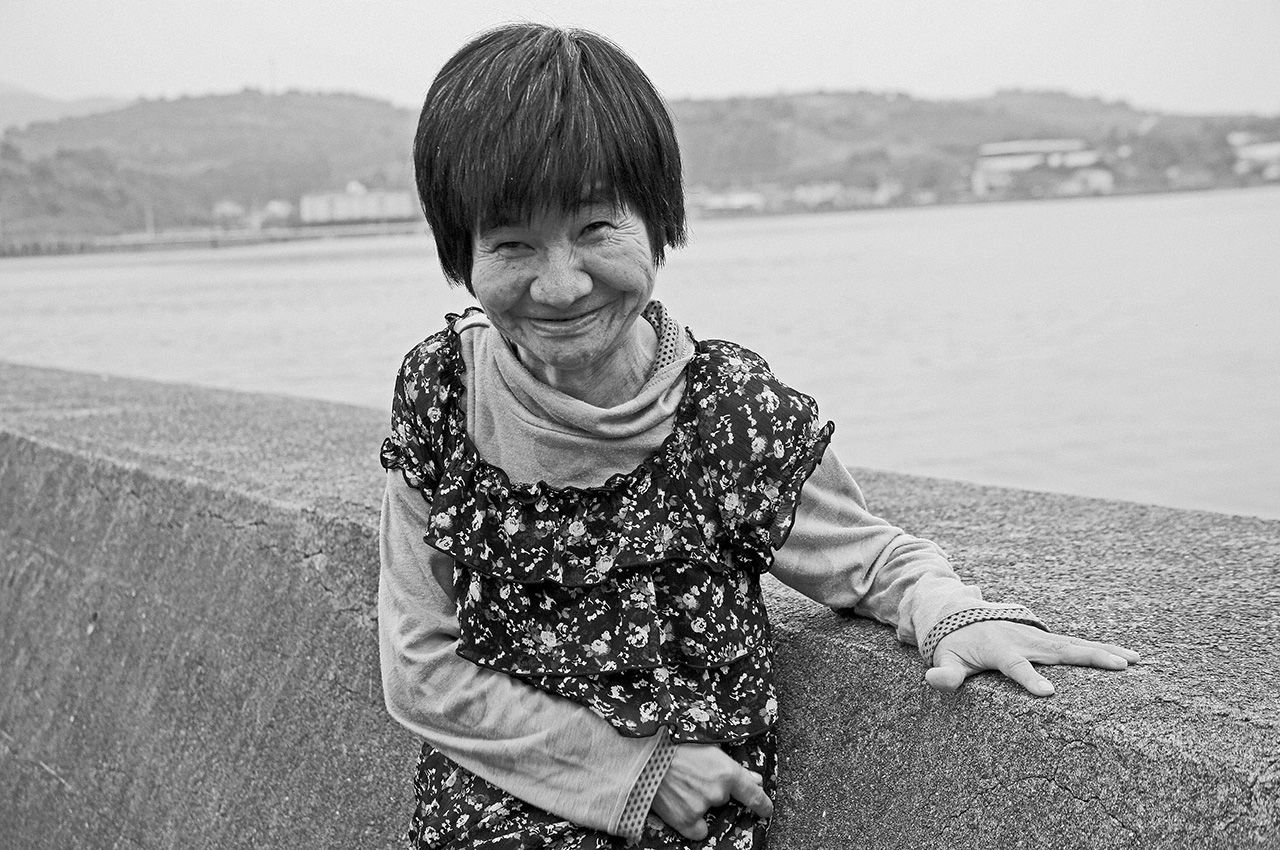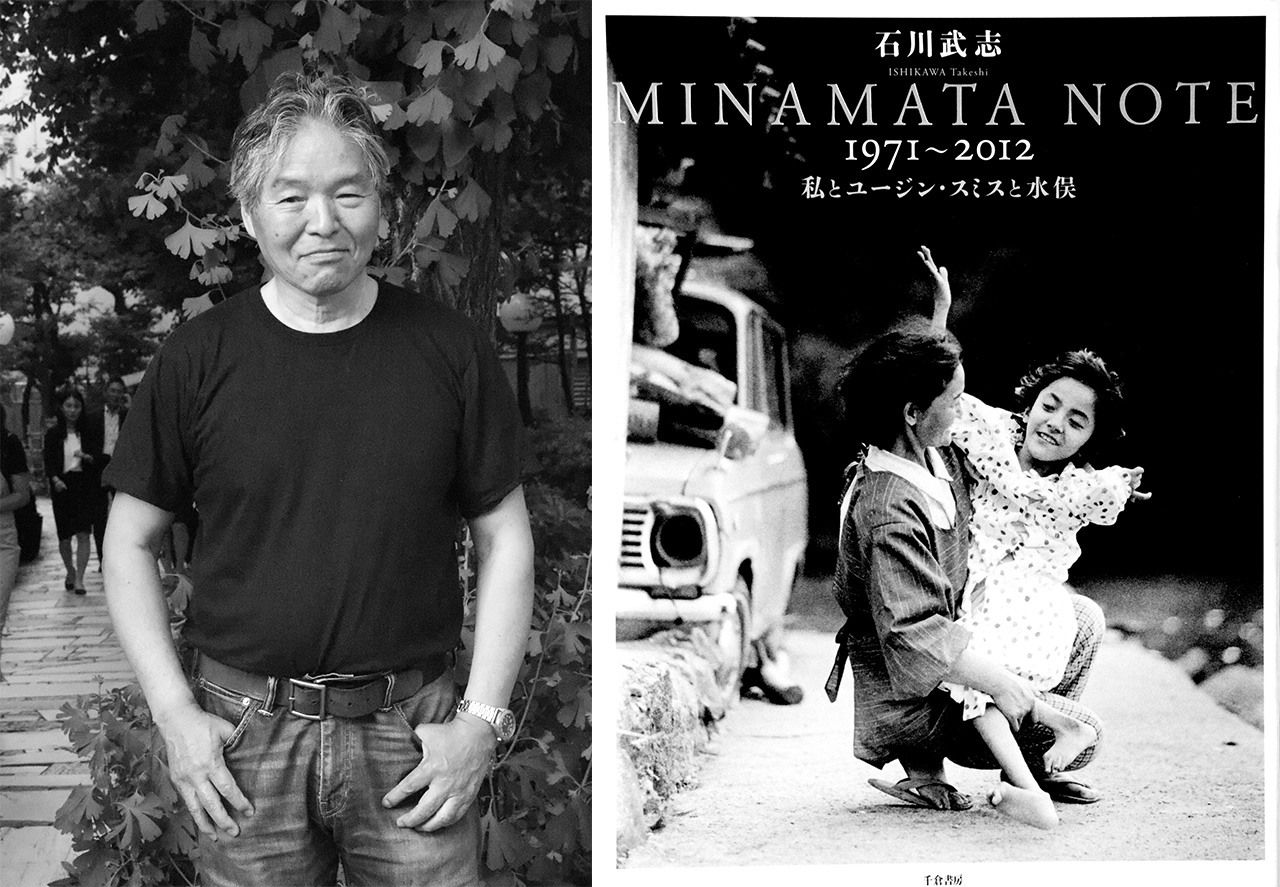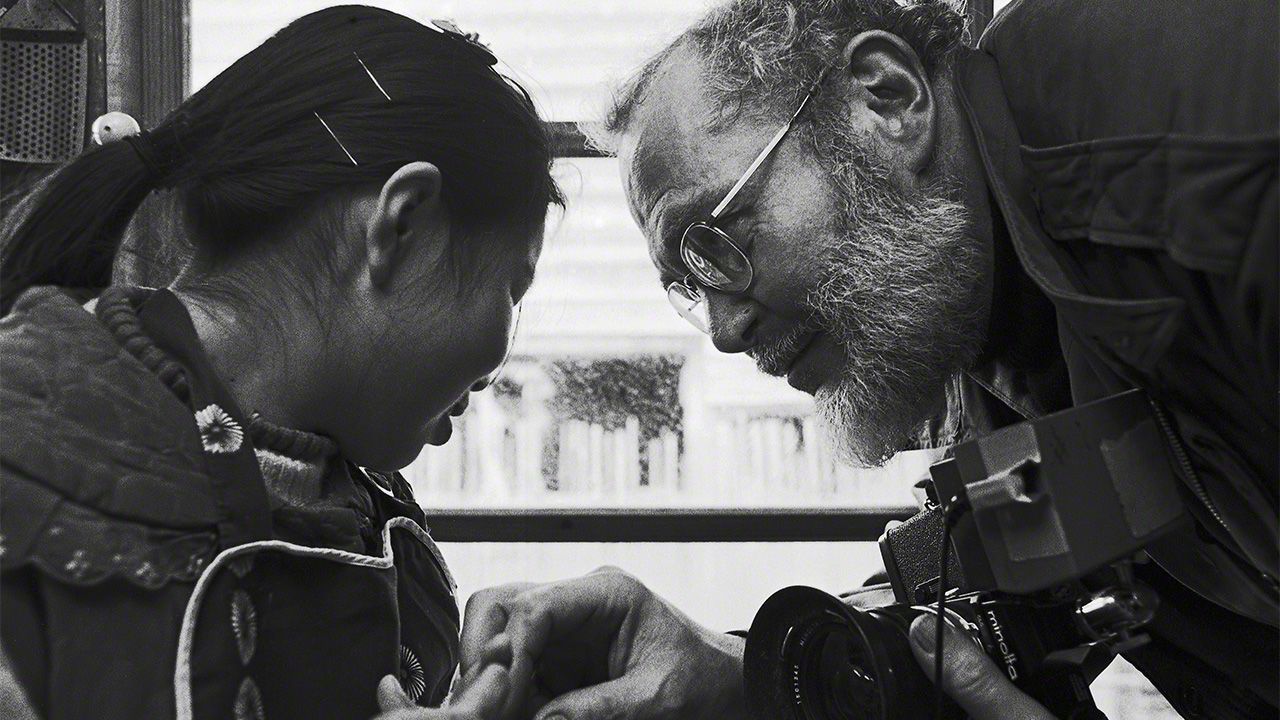
Minamata: Homage to W. Eugene Smith
Society Environment- English
- 日本語
- 简体字
- 繁體字
- Français
- Español
- العربية
- Русский
Minamata disease is known in Japan as one of the four environmental disasters that helped turned the tide against rampant industrial pollution in the 1960s and 1970s. Less familiar, perhaps, is the critical role played by the great American photojournalist W. Eugene Smith (1918–78) in alerting the world to the plight of Minamata’s victims and the ravages of pollution. We compiled this homage to Smith and his work in Minamata (the subject of an upcoming film starring Johnny Depp) with the help of Japanese photographer Ishikawa Takeshi, who worked as Smith’s close assistant in Minamata for a period of three years.
Photojournalist W. Eugene Smith
Born in Wichita, Kansas, in 1918, W. Eugene Smith achieved fame as a war photographer in World War II. He accompanied the US Marines in their island-hopping offensive against Japan in the Pacific, depicting American troops and Japanese prisoners in Saipan, Guam, Iwo Jima, and Okinawa. In 1945, he was seriously wounded by mortar fire while photographing the Battle of Okinawa and returned home to receive intensive medical care, undergoing 32 operations over a period of two years.
From the late 1940s through the mid-1950s, Smith worked for the hugely popular photo magazine Life, which boasted a circulation of 7 million at its peak. During those years, he produced a series of groundbreaking photo essays—including Country Doctor, A Spanish Village, and A Man of Mercy, profiling Albert Schweitzer—distinguished by their deep humanism and sense of social commitment.
Eugene Smith was already in his fifties when he heard about the poisoning of Minamata, a fishing and industrial community on the coast of Kumamoto Prefecture in southern Japan. In 1971, he and his wife, Aileen Mioko Smith, moved to Minamata, determined to tell its story through the medium of photojournalism. Their photo essay “Death-Flow from a Pipe,” published in the June 2, 1972, issue of Life, revealed the plight of Minamata’s victims to countless readers in America and beyond. Their 1975 book Minamata had an even broader impact. Smith was awarded the 1974 Robert Capa Gold Medal for his work in the city.
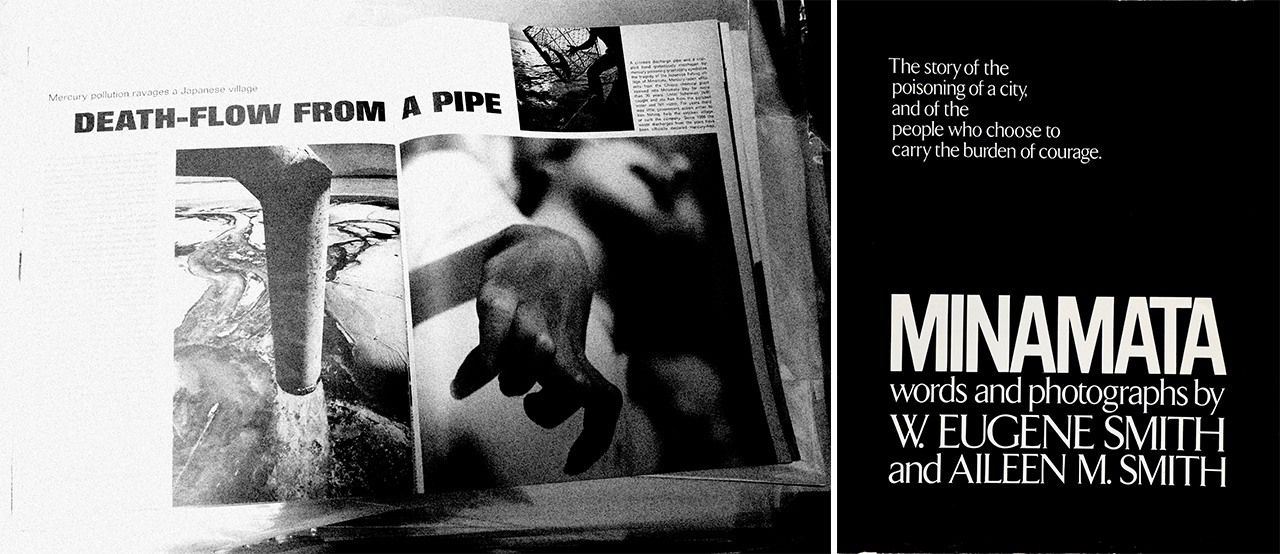
A spread from Smith’s photo essay “Death-Flow from a Pipe” in Life magazine (left); the cover of Minamata by W. Eugene Smith and Aileen Mioko Smith.
A Brief History of Minamata Disease
For years an acetaldehyde plant operated by the chemical manufacturer Chisso had been releasing untreated wastewater contaminated with methylmercury into the waters around Minamata. Mercury flowing into the bay accumulated in fish and shellfish that were then consumed by local inhabitants, causing a wide range of neurological problems, most of them irreversible. The poisoning led to sensory problems, paralysis, convulsions, and, in many cases, death. Particularly devastating were the cases of congenital Minamata disease, in which methylmercury passed through the mother’s placenta and concentrated in the tissues of the fetus, causing serious birth defects.
Minamata disease was first identified in 1956. By 1959, mercury poisoning had been identified as the cause. Chisso’s own in-house scientists confirmed the connection between the factory’s effluent and the neurological symptoms, but the company covered up the evidence, denied responsibility, and continued to release toxic wastewater into the bay. In addition to their physical suffering, the victims of Minamata disease, sacrificed at the altar of economic growth, endured years of stigmatization and intimidation. In 1968, the government finally acknowledged Chisso’s responsibility, opening a new chapter in the victims’ quest for justice. But their legal and bureaucratic battles had only begun.
Just over 2,000 (Chisso) Minamata disease patients have been certified to date, out of more than 17,000 applicants. Needless to say, these numbers do not include afflicted individuals who died before they could be certified or who chose not to apply, for whatever reason.
Ishikawa with Eugene Smith in Minamata
Eugene Smith arrived in Minamata with his wife Aileen Mioko Smith in September 1971. Photographer Ishikawa Takeshi was a witness to their work, living and working with the Smiths in Minamata for a period of three years.
Ishikawa’s meeting with Smith in 1971 was serendipitous. Just out of photography school, Ishikawa was living in the Harajuku neighborhood of Tokyo when he caught sight of Smith, whom he recognized from his photography textbook. Ishikawa had just been to a solo exhibition of Smith’s work, “Let Truth Be the Prejudice,” and had been deeply impressed. He screwed up the courage to approach the world-famous photojournalist, introducing himself as an aspiring photographer, and the two struck up a conversation. Little did he imagine that he would end up spending the next three years assisting Smith in Minamata.
“Everything I consider important in life, including photography and jazz, I learned from Eugene,” says Ishikawa. That extends to Smith’s notion of photography as a “small voice” for social change. “Back when I first ran into Eugene on the street, my ambition was to make a living taking photographs. Now, I’m always asking myself what I can do [for humanity] as a photographer.”
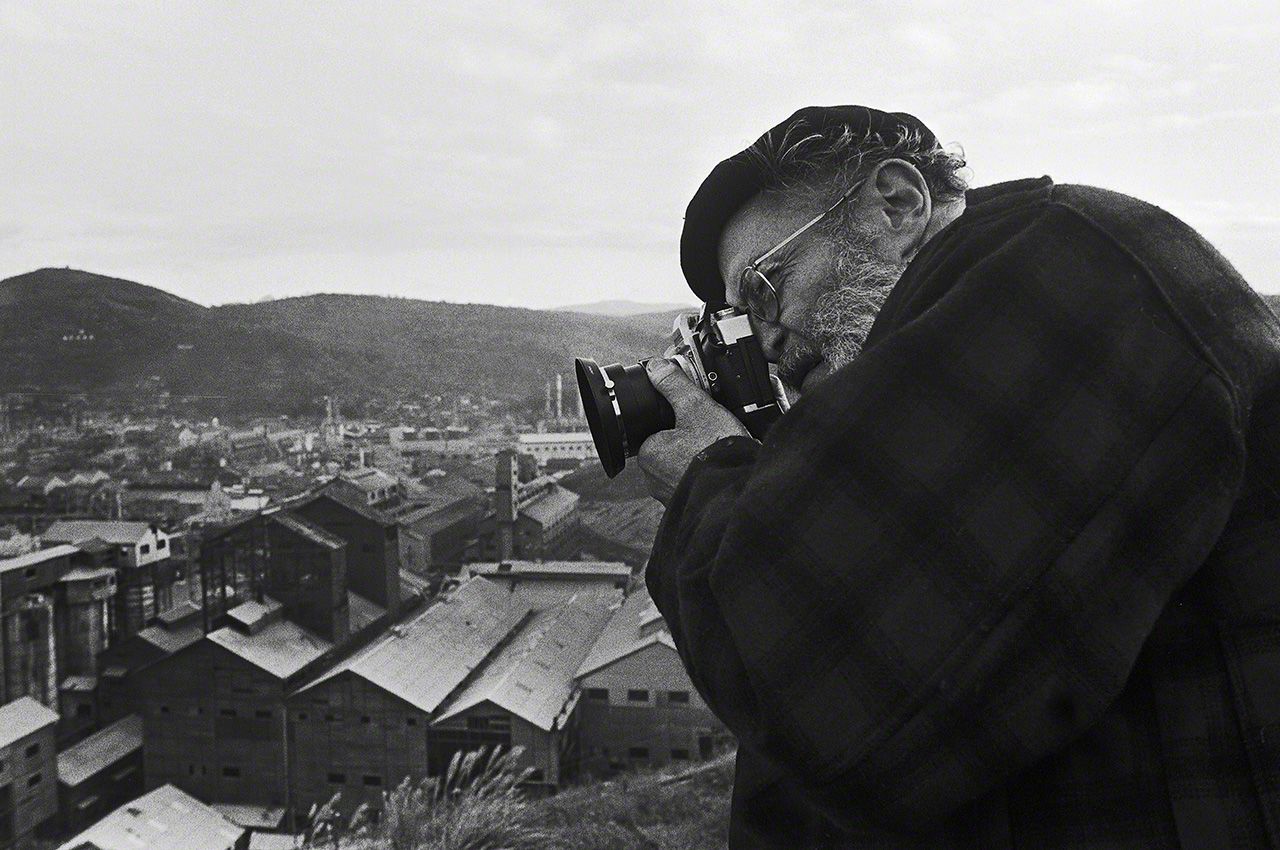
Eugene Smith photographing the Chisso chemical plant from the hills around Minamata in 1971.
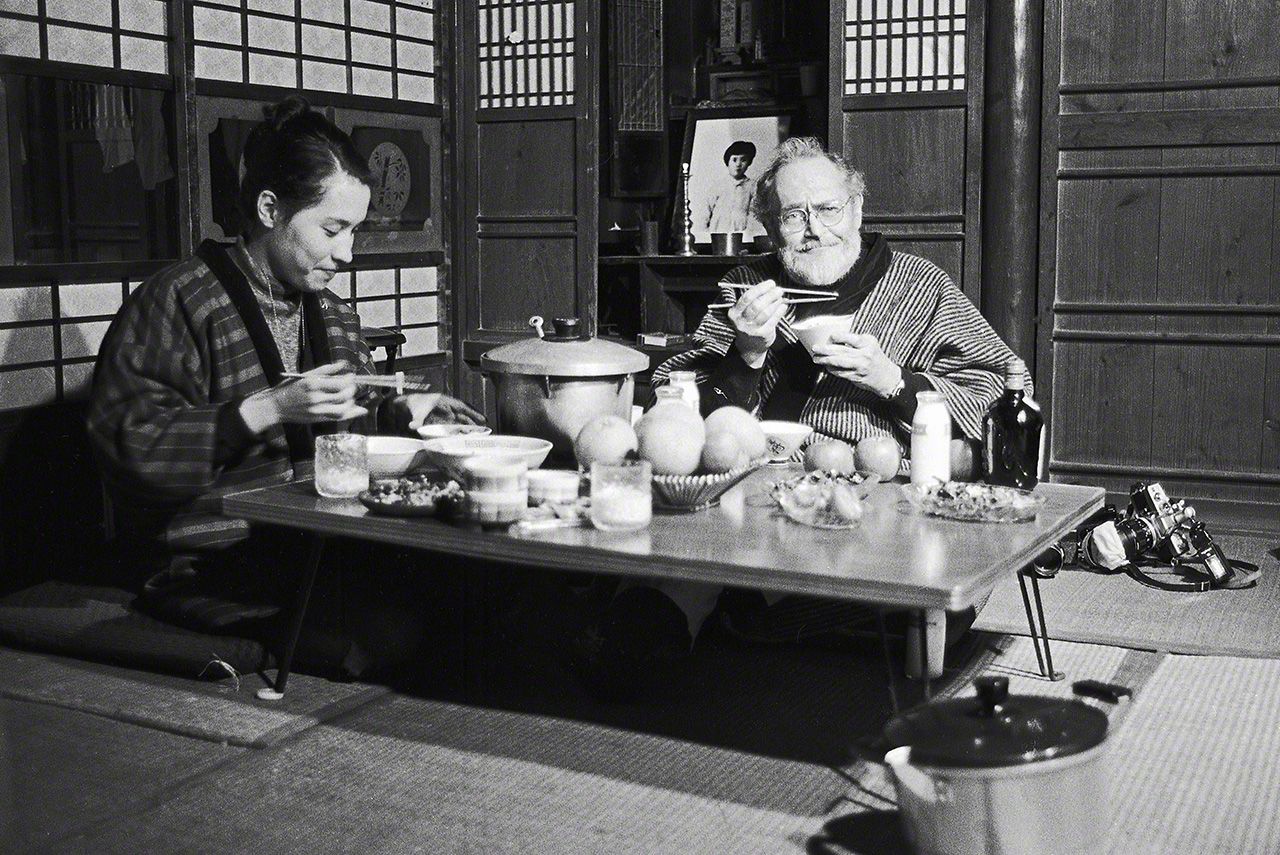
Eugene and his wife Aileen Mioko Smith in Minamata in 1972.
Smith had never fully recovered from the old injury sustained in Okinawa. Ishikawa recalls that his diet in Minamata was limited to soft foods—including a daily regimen of 10 or so 200-milliliter bottles of milk and one 640-millileter bottle of Suntory whisky, which Ishikawa believes helped ease his chronic pain.
Smith’s physical condition worsened after 1972, when he was attacked by Chisso thugs. He was accompanying a group of plaintiffs to an appointment with a Chisso executive in Ichihara, Chiba Prefecture, when they were confronted by a mob of hostile factory workers. Smith was beaten almost unconscious, nearly losing the use of his right eye. After that, nerve pain made it difficult for him to use his camera, but he continued to work in Minamata until November 1974, when he returned to the United States to complete the book.
Smith never made it back to Japan. In 1977, his health failing, he took a teaching job at the University of Arizona. He died of a stroke in Tucson in October 1978 at the age of 59.
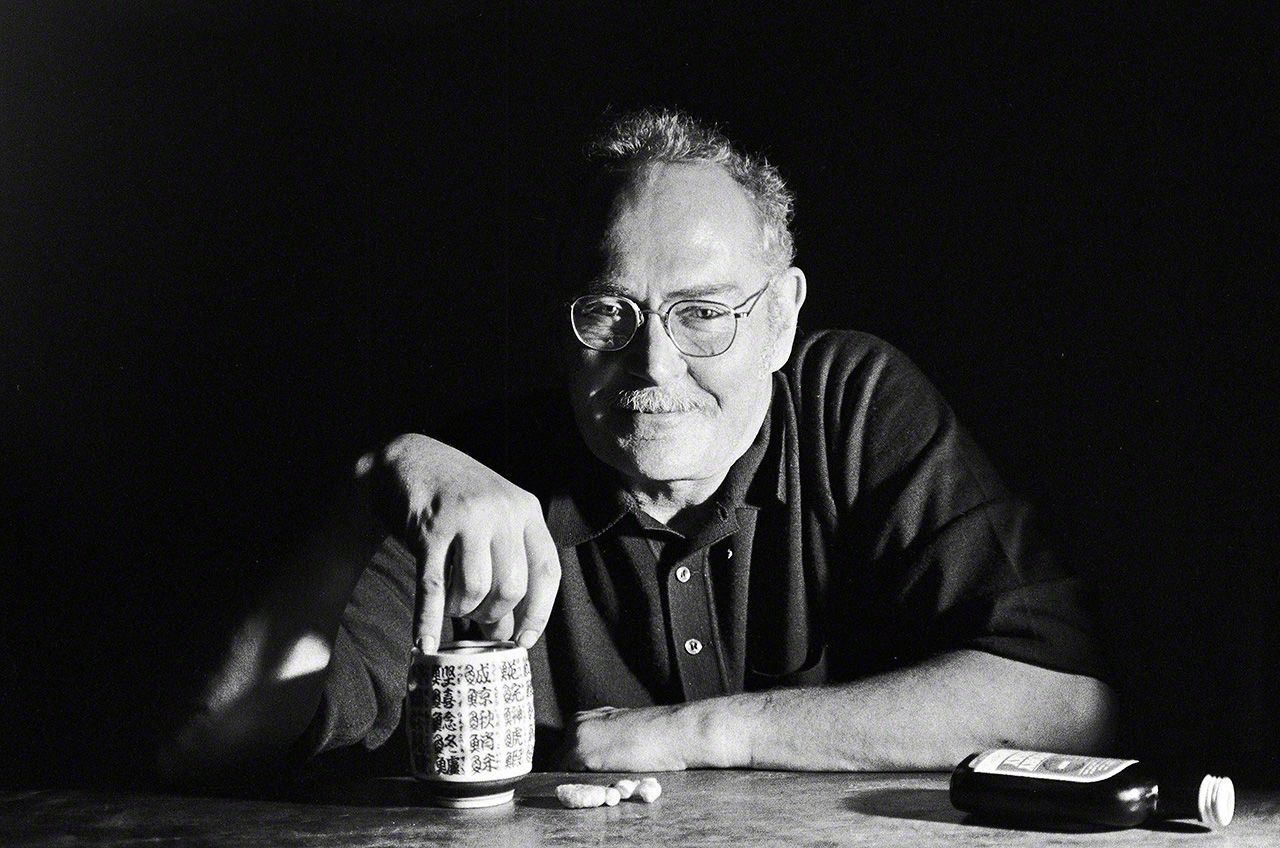
Eugene Smith in 1974, drinking whisky out of a teacup from a sushi shop.
Minamata Revisited
Over the years, Ishikawa stayed in touch with the Minamata victims and their families. As a photographer, however, he moved on to other subjects, and his own work from the three years he spent with the Smiths remained unpublished. Minamata was, after all, the preserve of the great W. Eugene Smith.
Then in 2008, Ishikawa attended a 30-year memorial service for Smith in Kyoto. The event drew more than 150 attendees, but Ishikawa was surprised to find that he was one of only a handful who had actually known Eugene in Japan. He felt inspired to commemorate and relive Smith’s interaction with the people of Minamata and to see for himself how the city and its residents had changed. That was when he began revisiting and rephotographing the community. “I embarked on a quest to retrace Eugene’s footsteps and the roots of my own work,” says Ishikawa.
Much had changed in the intervening years. Reclamation and construction had obliterated the evidence of Chisso’s crimes. Some of Smith’s subjects were no longer living. But Ishikawa was deeply gratified by his reception in Minamata. “They all remembered me,” he says. “I began to feel a need to take up where Eugene had left off as a witness to the anguish and hardship of the victims.” In 2012, Ishikawa published a collection titled Minamata Note (1971– 2012), consisting of his own previously unpublished photos from the 1970s, paired (where possible) with recent shots of the same people and places.
Minamata Then and Now
One of the victims Ishikawa immediately sought out was Smith’s beloved Tanaka Jitsuko. Jitsuko, an 18-year-old girl with a radiant smile, had became seriously disabled as a toddler as a result of mercury poisoning. Smith took hundreds of photos of this blooming young woman deprived of the capacity to talk, walk, or experience sensation in her hands, and he lamented his failure to capture Jitsuko’s fleeting expressions or her inner despair. Contemplating her fate, the great man “wept like a child” in Ishikawa’s presence. In Minamata Note, Ishikawa published his own portraits of Jitsuko “then and now.”
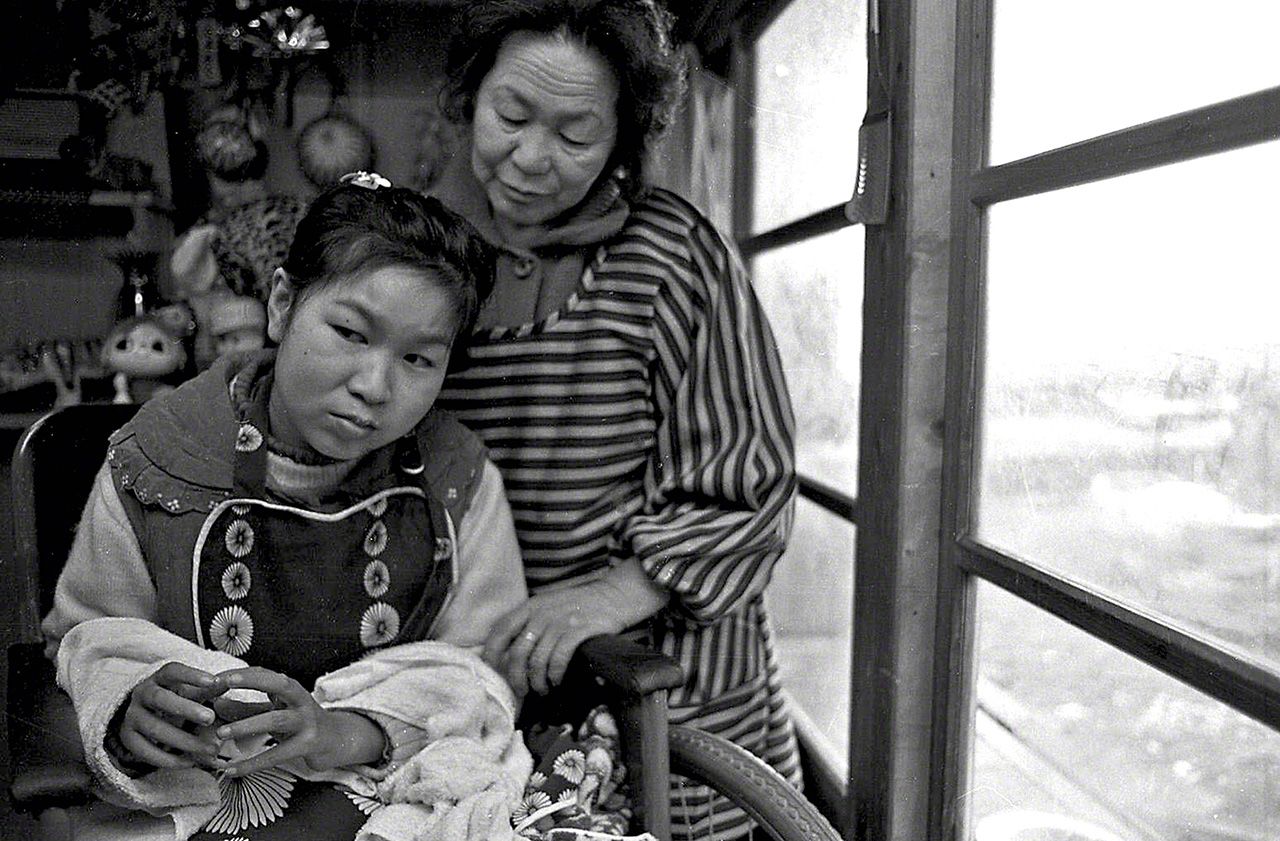
Tanaka Jitsuko (18) with her mother in 1971.
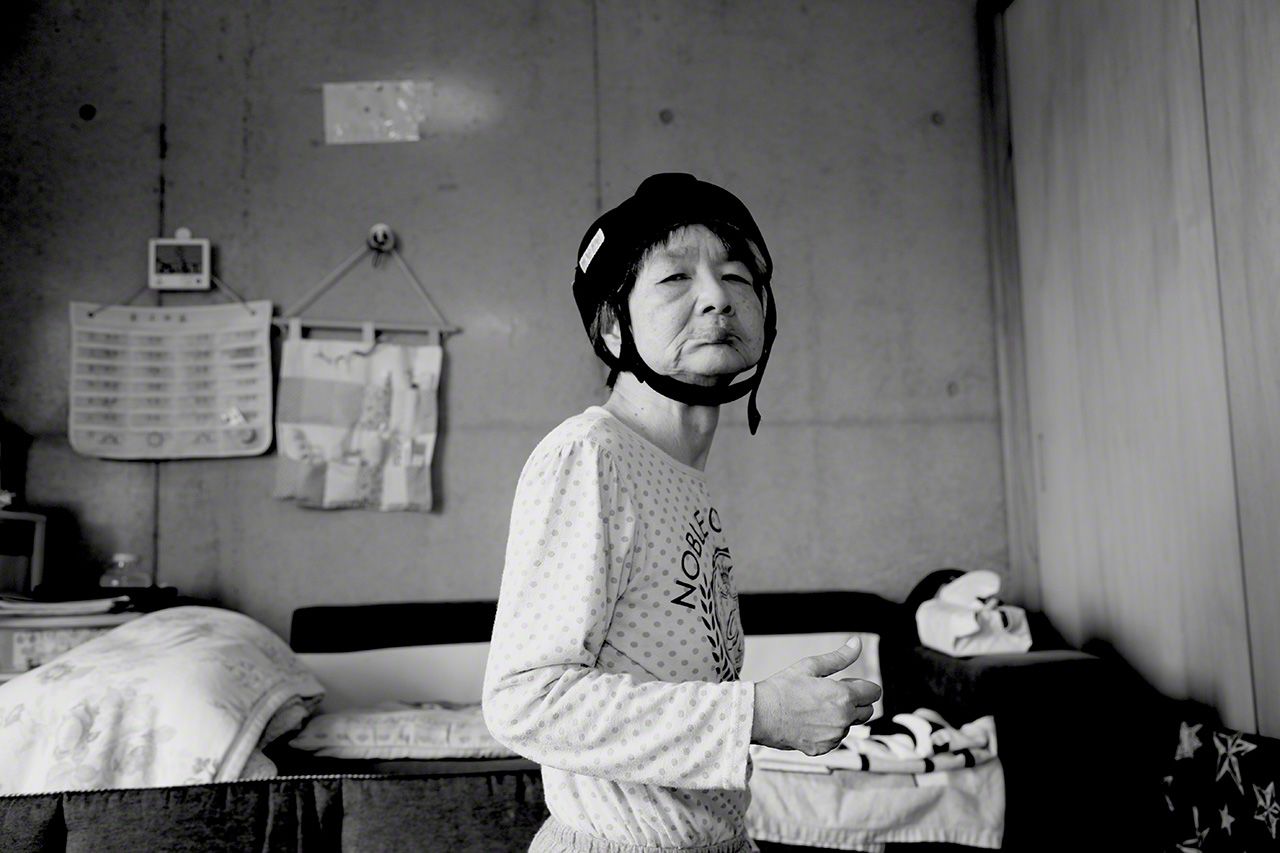
Tanaka Jitsuko in 2018. Today she resides with her elderly sister and brother-in-law and receives round-the-clock nursing care. The helmet is to protect her head from falls.
On the other hand, Smith’s most famous subject, Kamimura Tomoko, had long since succumbed to the disease. Tomoko had been exposed to mercury in utero and was born with severe deformities and neurological damage. She was 15 when Smith immortalized her in his iconic Minamata photo, Tomoko and Mother in the Bath.(*1) It was from Tomoko’s mother Ryōko that Ishikawa first heard the term takarago, “precious child.” Ryōko believed that Tomoko, while in the womb, had absorbed the toxins ingested by her mother so that neither Ryōko nor her other six children suffered the effects of mercury poisoning. Tomoko died in 1977 at the age of 21.
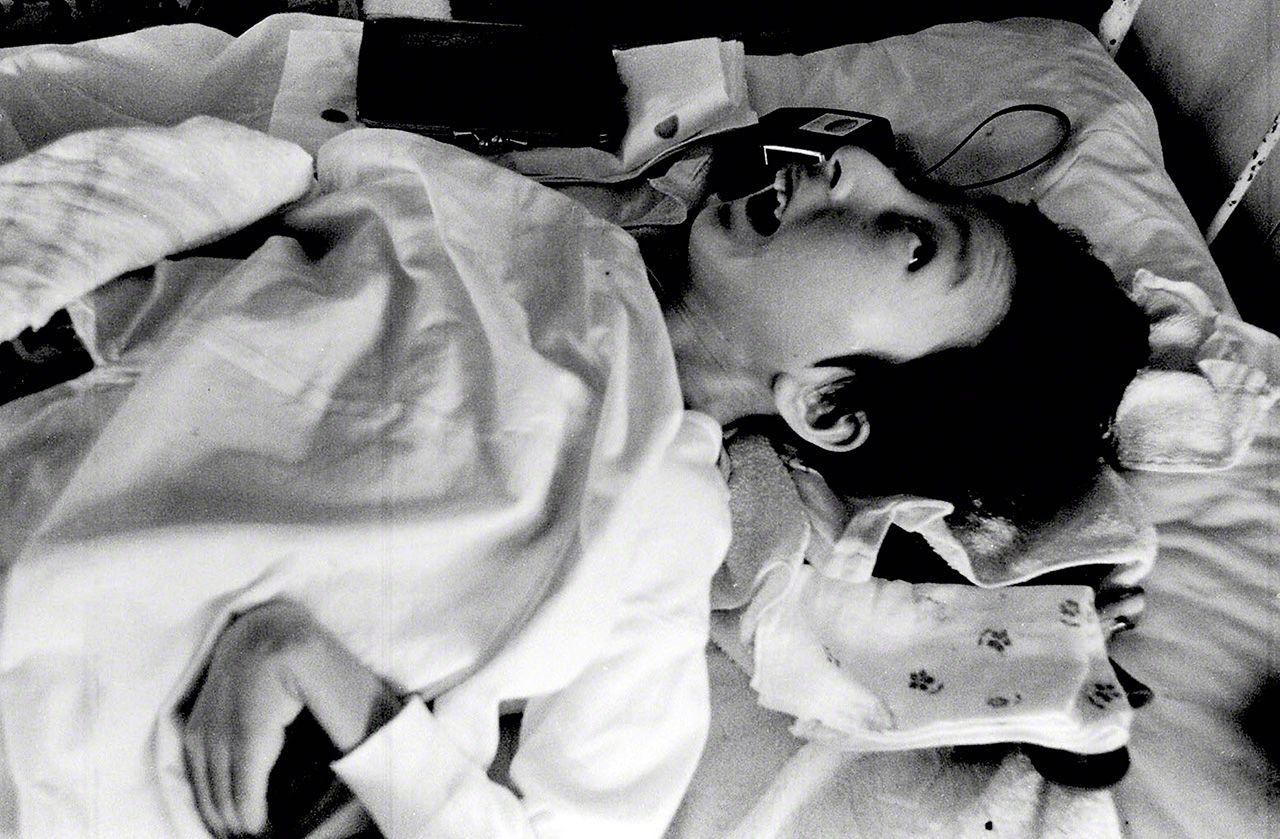
Kamimura Tomoko (16) in 1973. Born on June 13, 1956, she was officially diagnosed with congenital Minamata disease in November 1962.
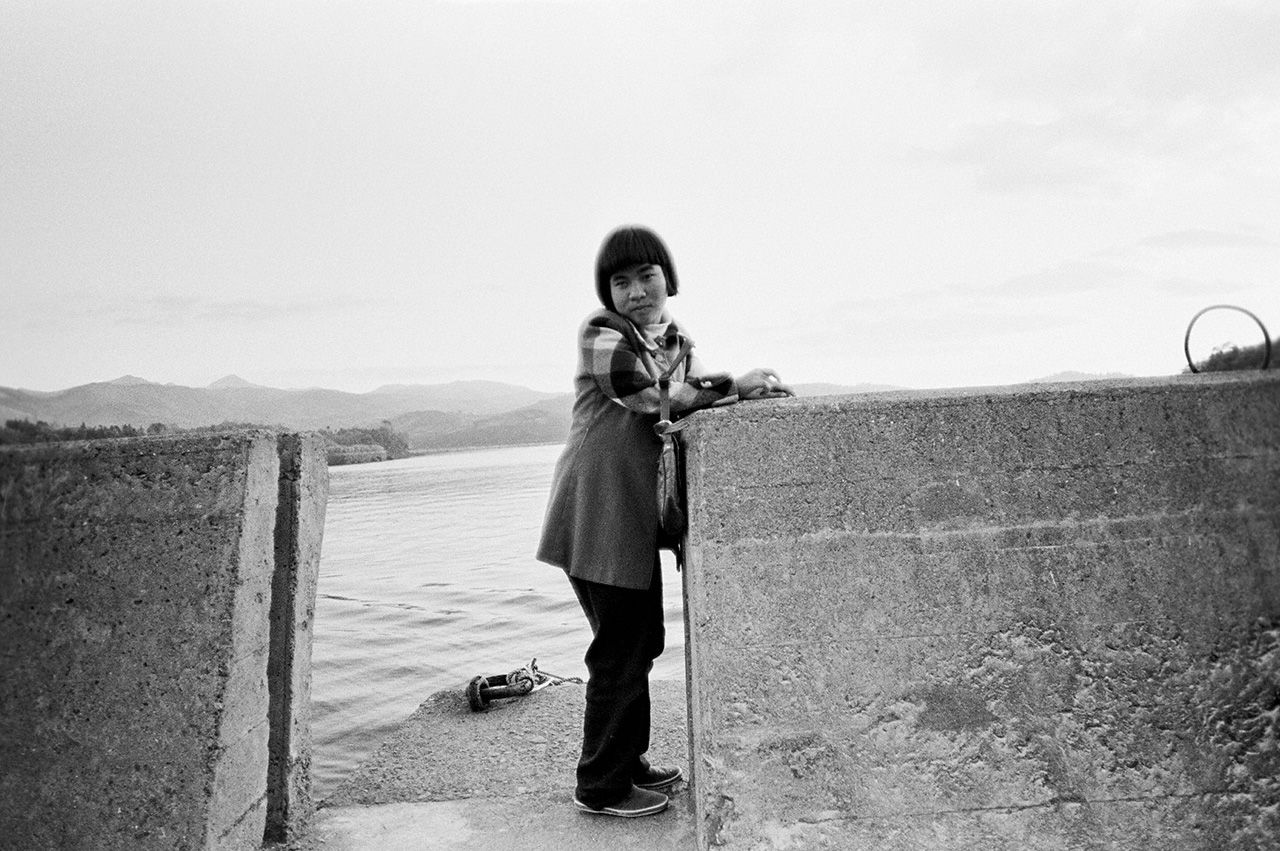
Sakamoto Shinobu (16) in 1972. She was 6 when she was diagnosed with congenital Minamata disease.
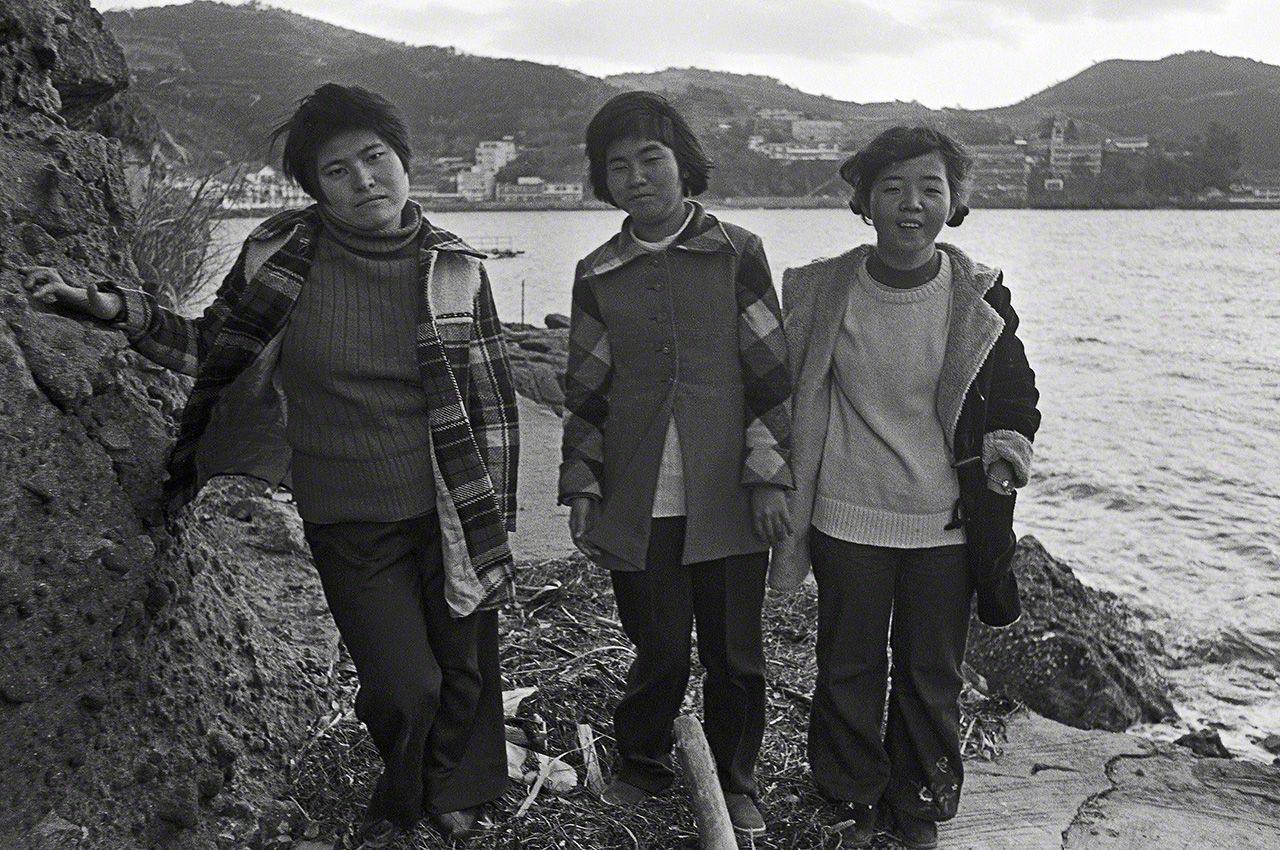
Minamata disease victims and childhood friends (from left) Kagata Kiyoko (19), Sakamoto Shinobu (16), and Maeda Emiko (19) in 1972.
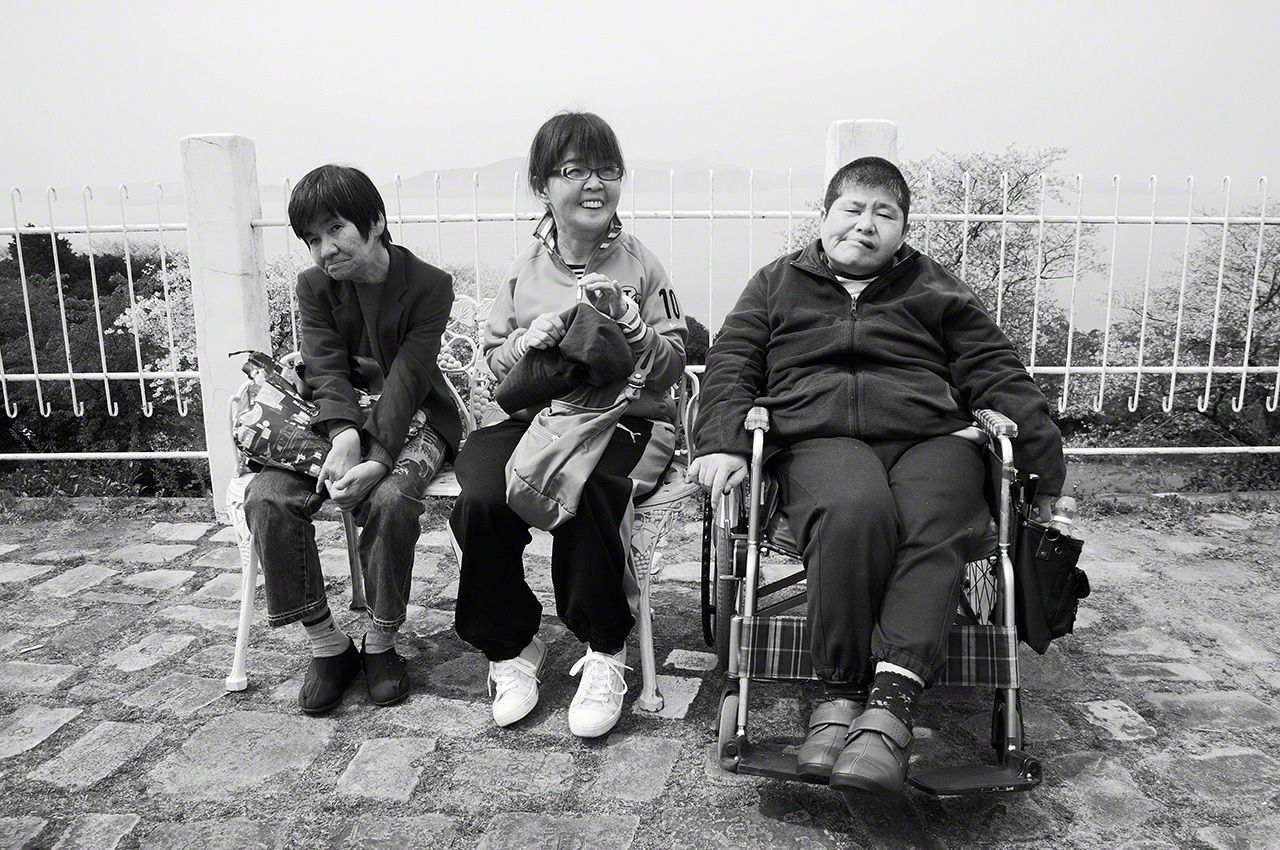
Sakamoto Shinobu, Maeda Emiko, and Kagata Kiyoko near the same spot in Minamata 40 years later, in 2012. Kagata (right) is confined to a wheelchair. Maeda (center) died in 2018.
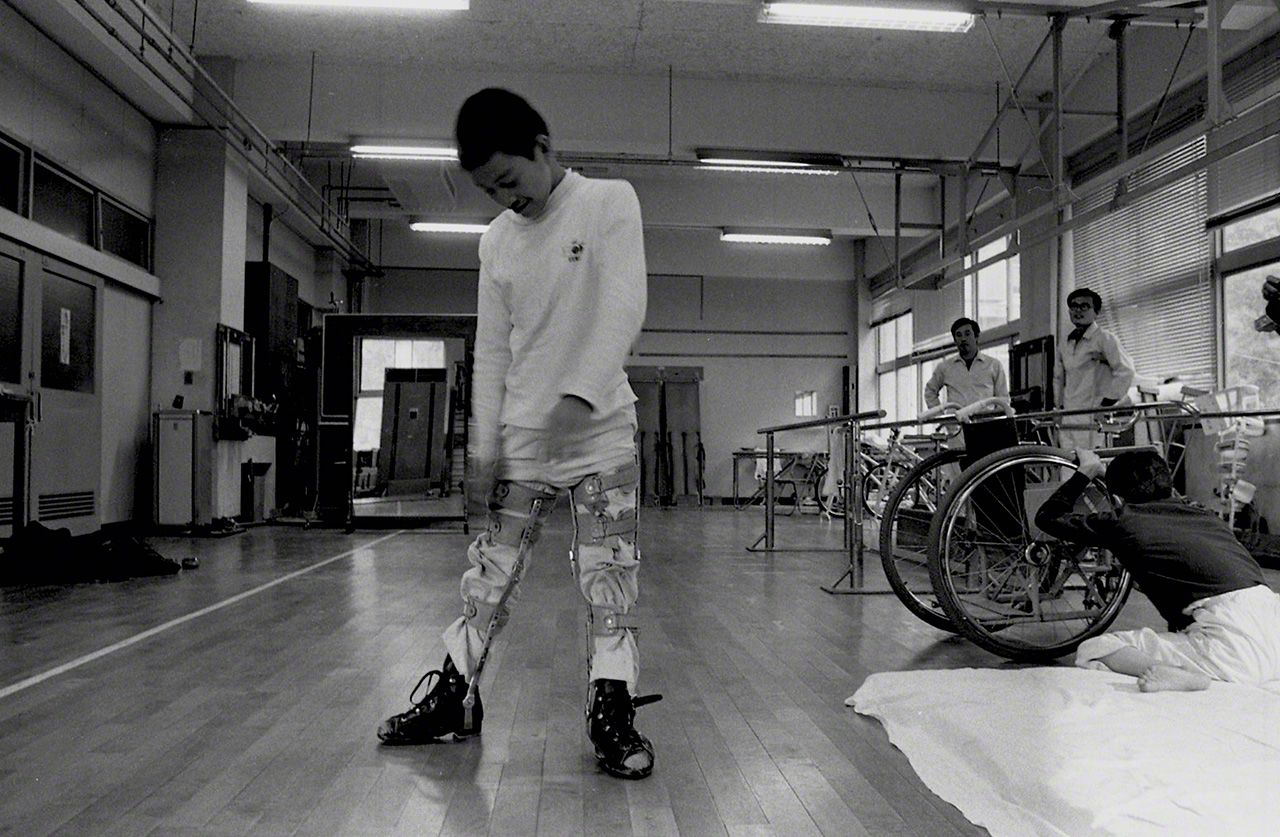
Nagai Isamu (14) in 1973. Partially paralyzed from childhood, he endured hours of grueling physical therapy. Encouraged by Smith, he enthusiastically pursued photography, making use of the Smiths’ darkroom.
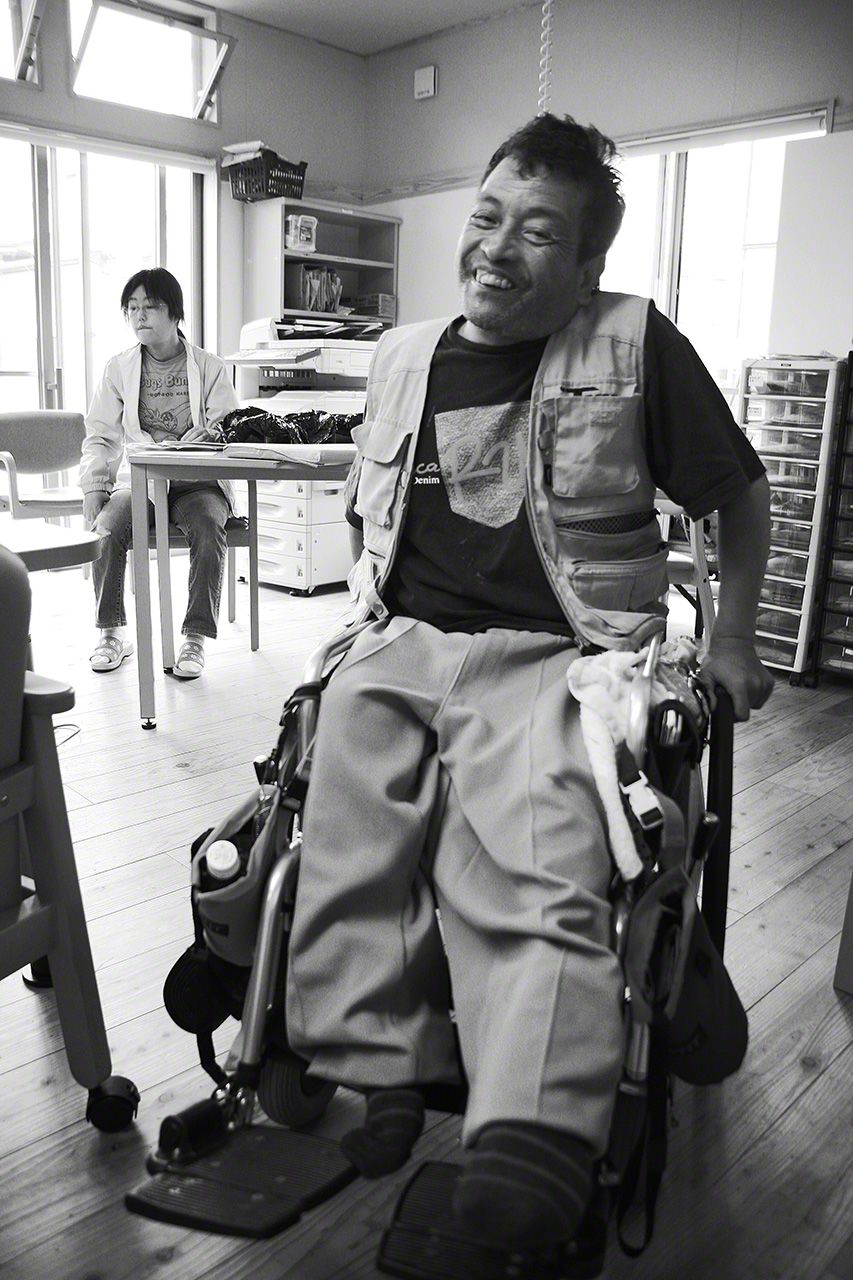
Nagai Isamu in 2011. His condition worsened suddenly in 2010, and he is now unable to move to or from his wheelchair without assistance.
Mercury contamination is no longer a social issue in Japan. But mercury is still used in such processes as gold extraction in the developing world, posing an ongoing threat to human health. In August 2017, a United Nations treaty to control mercury emissions came into force. The Minamata Convention on Mercury aims to protect the environment and human health from anthropogenic emissions and releases of mercury and prevent a repeat of the tragedy that took place in Minamata. In September 2017, Minamata victim Sakamoto Shinobu spoke at the first Conference of the Parties to the Convention in Geneva. “My condition has gotten worse,” she said. “Minamata disease is by no means over. Let us work together to abolish mercury pollution.”
(Originally written in Japanese. All photos by Ishikawa Takeshi. Banner photo: Eugene Smith photographing Minamata disease victim Tanaka Jitsuko in 1971 taken by Ishikawa Takeshi.)
(*1) ^ Because the subjects’ surname was mistakenly recorded as Uemura, the photo is sometimes referred to as Tomoko Uemura in Her Bath.—Ed.
environment pollution disease Minamata Minamata disease W. Eugene Smith
